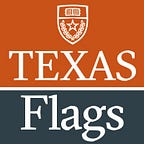Telling Human Stories through Programming and Data Analysis
Christian McDonald tells his students in his Reporting with Data course: “We don’t tell stories about numbers. We tell stories about people.” McDonald, who has won multiple awards for his work in data journalism, wants to show students how data can be a powerful source for their writing. Just as interviews, photographs, and videos are potential sources for stories, data is also a source. However, many of the Journalism students he sees in the classroom don’t have the skills to use it. In his course, McDonald has two main goals: he wants his students to understand how using data analysis well can add transparency and authority to their journalism, and he wants to give students the confidence to be able to effectively provide context and build empathy for others by using data to tell stories.
With the growing concern about fake news, giving Journalism students quantitative skills adds rigor and transparency to their reporting that is vital to their careers and the future of their profession. Before McDonald’s course, many of the students are unfamiliar with using data or programming. In a small format lab, McDonald takes students from a rudimentary understanding of Excel spreadsheets to analyze data using their own programming. Adding the Quantitative Reasoning Flag — which aims to equip students to use quantitative skills such as data analysis, modeling, and statistics to “make sense of and gain a deeper understanding of the real world” — was a natural fit for McDonald’s goal of strengthening students’ analytic skills.
Since McDonald began teaching the course, he has adapted the skills he teaches to reflect emerging analytic tools in Journalism. In previous years, students learned data visualization programs such as Tableau. This year, McDonald decided to introduce the students to programming in R. Although programming is a steeper learning curve for some students, it is a powerful analytic tool that allows students to add scope and rigor to their writing and makes their work more transparent and replicable. For McDonald, a key part of good data journalism is the ability for others to verify and build on your work. He requires that the students keep a digital notebook that logs their codes and the reasoning they used to develop them. If there are any questions about the findings in the story, the readers can run the data with the same code to verify the findings themselves. Teaching students the practice of recording their reasoning and making their codes public teaches them the importance of accountability and transparency.
In addition to learning how to analyze data, McDonald teaches them how to write good stories using their findings. It is not enough, in a story, for Journalism students to say that 24 percent of UT Austin students receive the Pell Grant (a federal grant for low-income students). The students have to also describe the difficulties low-income students face being on campus. In class, he brings in examples of published articles using data to show students how to write human stories with their findings. In each of their stories, McDonald wants the students to make the human connection for their readers between the sterile numbers and the lives of the people those numbers describe.
The students’ final project, a story that uses data analysis, incorporates both quantitative reasoning and writing skills. However, McDonald wants the final project to be more than just an application of skills from class, he wants the students to get a taste of working as a professional data journalist. At the beginning of the semester, he immediately has students submit a public information request for data. Having them submit the request gives them experience working with public information officials and understanding the types of public information they can access. In this course, McDonald wants students to get experience with the entire story development process, from negotiating data access with government officials to writing programming and using data to explain human stories.
When the students from his course go on to their first jobs, McDonald hopes that they understand that “any beat has data behind it.” By learning programming and quantitative reasoning skills, students have a base in data analysis and confidence to use data to tell human stories, regardless of where they work. Data is a powerful source that can make any story more authoritative, transparent, and empathetic. And good data journalism not only uses rigorous data analysis, but it also tells human stories by providing context to an individual’s experiences. McDonald hopes that students carry those two lessons with them as they tackle future stories in their careers.
By Abby Attia, Graduate Assistant at the Center for Skills and Experience Flags
